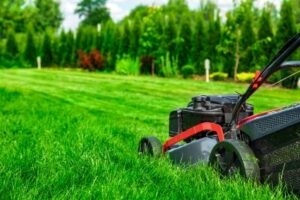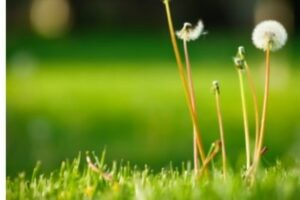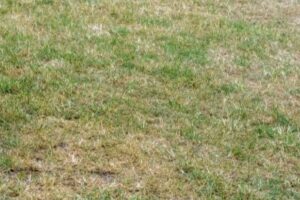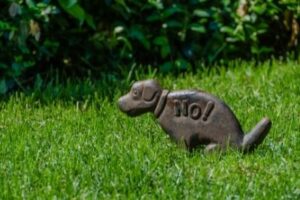 A lush, healthy lawn doesn’t just happen. It starts with fertile soil, good seed and a proper fertilizer, a consistent mowing schedule, and season-after-season disciplined maintenance.
A lush, healthy lawn doesn’t just happen. It starts with fertile soil, good seed and a proper fertilizer, a consistent mowing schedule, and season-after-season disciplined maintenance.
Here’s a cheat sheet on spotting (and correcting) typical lawn problems:
We’ll start with one of the most common lawn problems: weeds.
WEEDS
 Perennial broadleaf weeds such as dandelions start to grow in early spring and remain active through summer. If not treated immediately, they can get out of control in a hurry. The moment you see established weeds actively growing, apply a post-emergence broadleaf weed control product.
Perennial broadleaf weeds such as dandelions start to grow in early spring and remain active through summer. If not treated immediately, they can get out of control in a hurry. The moment you see established weeds actively growing, apply a post-emergence broadleaf weed control product.
Try to avoid cutting dandelions when you mow the grass because your lawnmower will throw seeds onto other areas of your lawn.
DROUGHT
If you have Bermuda grass, you may think you’re safe from problems when your lawn goes into drought dormancy mode. Wrong. A shortage of rainfall will still thin your lawn and promote weed growth. So owners of both warm- and cool-season grasses need to keep a close eye on extended dry weather and irrigate the lawn regularly.
Dig below the top soil to see if there is moisture. If not, get those sprinklers going. More on caring for your lawn in a drought.
SOGGY SOIL
Of course, you can have too much moisture on your lawn, especially standing water. If ignored, puddles can thin the grass and create a breeding ground for weeds, not to mention mosquitoes in summer. After a rain storm, get in the habit of walking your property to look for standing water. Is a nearby drain clogged? Is the land poorly graded? If neither are apparent, it may be you have poor soil structure.
When a lot is graded, the humus and other organic matter found in the top layer of clay or sandy soil may be entirely stripped away. Humus is not only important for the nutrition of your lawn, it improves soil retention and drainage. Humus depletion is especially hard on clay-based soils. Adding something like sphagnum peat moss will improve the condition of the soil.
An independent landscaping expert can help you identify the source of poor drainage. But don’t do nothing. If you act immediately to solve the problem, you still may be able to revive the grass. If ignored or addressed too late, you may need to re-plant the area. More on the importance of soil.
MOSSY GRASS
If you find moss growing on the surface of your lawn, this may be because the soil is acidic. A lime treatment will solve this problem.
COMPACTION
 It may surprise you to know that half of your soil’s volume is actually made up of pockets of air and water. This is your soil’s pore space. It is the environment that allows roots to grow healthy and strong. Without pore space, air and water cannot penetrate the soil; roots will weaken and even die. The lack of pore space is called compaction. It usually happens from heavy foot traffic or from cars and other heavy equipment.
It may surprise you to know that half of your soil’s volume is actually made up of pockets of air and water. This is your soil’s pore space. It is the environment that allows roots to grow healthy and strong. Without pore space, air and water cannot penetrate the soil; roots will weaken and even die. The lack of pore space is called compaction. It usually happens from heavy foot traffic or from cars and other heavy equipment.
Compacted soil can be loosened with tilling and aerating. It will also happen naturally from the seasonal process of freeze and thaw.
FERTILIZER BURN
When too much fertilizer is applied to too small an area, the grass will die. The usual culprit is when you spill fertilizer when loading your spreader, or you may forget to close the spreader opening when making tight turns.
A few days after applying fertilizer, do you notice bleached or brown spots, bordered by dark green outer edges? These extremes are a dead giveaway that fertilizer dissolved in high concentrations and became toxic to the grass, while that outer edge actually is well-fertilized grass. To avoid this, load the spreader on pavement, away from the lawn. If it does spill on the grass, scoop up as much as you can. Flush the area with water to dilute any fertilizer you may have missed.
PET URINE
 Dog urine is a source of nitrogen. How it affects your lawn depends on whether it was recently fertilized. If there is heavy urine in one spot on grass recently treated with fertilizer, it will have the same effect as if you had spilled fertilizer or put down too much in a tight turn without closing the spreader opening. Burn spots eventually will appear.
Dog urine is a source of nitrogen. How it affects your lawn depends on whether it was recently fertilized. If there is heavy urine in one spot on grass recently treated with fertilizer, it will have the same effect as if you had spilled fertilizer or put down too much in a tight turn without closing the spreader opening. Burn spots eventually will appear.
Dog urine on un-fertilized lawns will create dark green growth patches.
You will not notice dog urine if your lawn is treated with fertilizer when the application was not recently.
No matter the issue, the important thing to remember is that your lawn problems will not fix themselves. Throughout the season, get in the habit of walking around the yard, inspecting it up close. Be on the lookout for any of the above problems — and recognize that different lawns in different regions may behave slightly differently — so that you can take the necessary corrective action as soon as possible. If you’re consistent about it, you’ll be amazed by how even the smallest problem can becoming glaring. With this awareness, you’re on your way to a solution and a healthy, lush lawn.
Your local independent lawn and landscape dealer can give you advice on how to solve specific problems and address concerns that you have. To find a dealer near you, click here.

